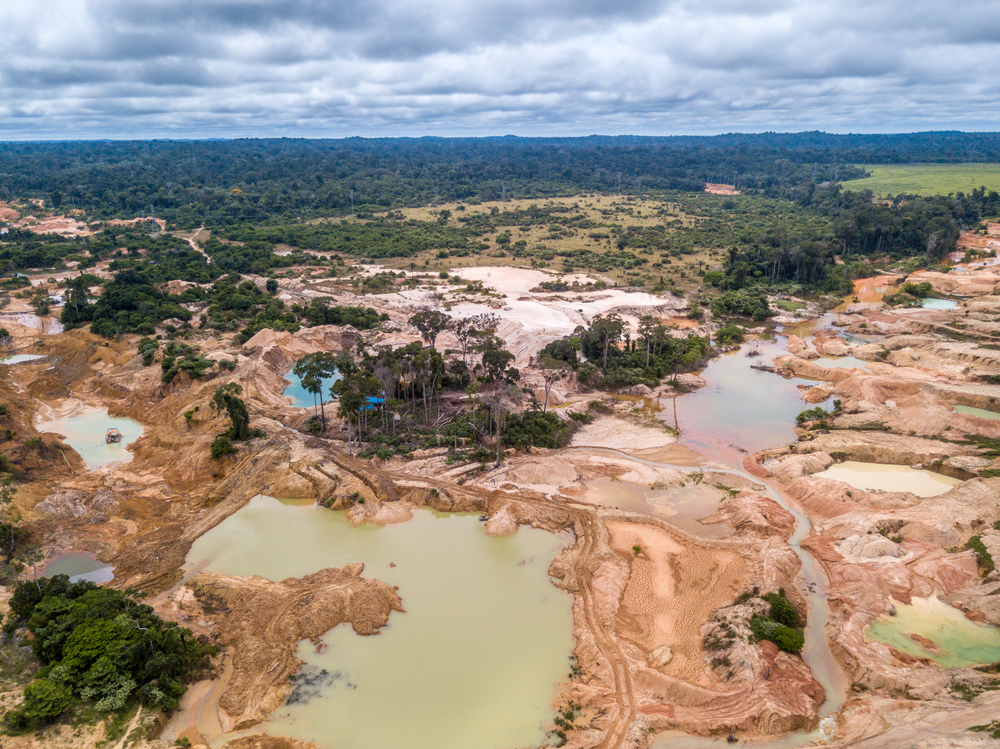Though it comprises only 1% of the Earth’s land surface, Central America boasts a remarkable 5-12% of the planet’s total biodiversity. Despite its extensive network of protected areas, Central America has witnessed alarming rates of deforestation over the past decade. While agriculture and livestock are the primary drivers of deforestation in the region, a lesser-known and often overlooked crisis erodes the area’s ‘hyperdiversity’. Due to the American-led war on drugs, current debates around the impact of illicit economies have centred around coca producing countries, such as Brazil and Colombia. Recently the growing connection between deforestation and drug trafficking in Central America has led to what researchers from Oregon State University have called ‘narco-deforestation’.
It is important to recognise that research on the environmental effects of illicit drug economies is a relatively new and limited field. To date, most discussions have revolved around coca cultivation in the Amazon and rural Colombia, and the environmental consequences of spraying harmful pesticides over swathes of forest and coca fields, a practice employed by Colombian counternarcotic teams since 2016.
While it is difficult to estimate the size of the environmental footprint of illicit drug cultivation and manufacturing, the United Nations Office on Drugs and Crime (UNODC) provides the most approximate figures. It estimated that coca cultivation is more environmentally degrading than other licit crops like coffee beans and sugar cane, with the carbon emissions of global cocaine manufacture amounting to roughly 8.9 million tons of CO2, the equivalent of almost 2 million cars’ emissions per year. However, the UNODC also acknowledges that the global impact of all illicit crops is “relatively small compared with that of the legal agricultural or pharmaceutical sector”.
Increasingly, evidence suggests that increased drug trafficking networks are linked to forest losses in Central America: this is most likely accelerated by the fact that 86% of global cocaine transits through this region before reaching consumers. Illicit profits generated from drug-related activities are frequently funnelled into money laundering schemes that involve significant land use changes. This involves the conversion of forested areas into agricultural land, primarily utilised for purposes such as cattle ranching, palm oil plantations, or illegal timber extraction.
What exactly is narco-deforestation?
“Narco-deforestation” can be defined as deforestation caused by the illegal drug trade and trafficking activities, often done by criminal organisations or cartels. The term itself was coined by a group of researchers from Oregon State University. In areas where narco-trafficking is prevalent, criminal groups may engage in activities such as illegal logging, land clearing for illicit drug cultivation (usually coca or opium), road building or needed infrastructure; this is usually done through remote and untouched forests. These activities can have devastating environmental and ecological consequences, including the loss of biodiversity, disruption of local ecosystems, degradation of soil quality, and exacerbation of climate change. Narco-deforestation highlights the intersection of environmental issues with criminal activities and the challenges faced by law enforcement agencies and conservationists in addressing this complex problem.
How weak law enforcement facilitates narco-deforestation
Weak environmental law enforcement across Latin America inadvertently lays the groundwork for a double-edged devastation. Weak environmental laws in Central America allow for unchecked logging and land clearance for agriculture, exacerbating deforestation in the region. Narco-deforestation capitalises on the very same weaknesses in environmental law enforcement that agricultural and livestock activities in the region have been exploiting for years. Unchecked deforestation, carried out for agricultural expansion can often lay the groundwork for narco-trafficking to thrive by giving gangs access to vast, remote areas with reduced surveillance and law enforcement presence.
If one sector can brazenly carve a path through supposedly protected lands with minimal repercussions, other clandestine enterprises may become emboldened to consolidate their control of the region, developing existing infrastructure (such as roads and pathways within forests) to reach these remote areas. Fundamentally, weak law enforcement, whether exploited by licit or illicit economies, is emboldening not only narco-deforestation but other clandestine activities that happen in these unchecked and unregulated lands. The connection between drug trafficking and other illicit activities like mining, logging, and fishing exemplifies how weak law enforcement can lead to multidimensional exploitation of the environment.

Intertwined economies
Illicit economies, including drug trafficking, have a complex and intertwined relationship with the socioeconomic fabric of Latin America. Distinguishing between legal and illegal commodities becomes considerably more complex in practice, especially when considering the intricate web of poverty, criminality, and marginalisation. For many, the illicit market is a crucial source of income, employment, and economic stability, and often sustains local economies. On frontiers, communities may acknowledge certain activities as illegal but view them as legitimate due to limited alternatives, economic reliance, and a lack of state presence, blurring the lines between legality and local realities.
The distinction between legal and illegal practices often isn’t connected with a good or bad economy; in fact, “legitimate” businesses are often guilty of environmentally destructive practices. The palm oil industry has a serious history of environmental regulation infractions; these are often done by large corporations operating across Central America. Much like narco-deforestation, palm oil companies engage in illegal land acquisition, logging and water diversion, often at the expense of indigenous communities and within protected areas.
Just as transnational organised crime exploits weak law enforcement to expand their operations, palm oil and agricultural industries exploit those same vulnerabilities for business purposes. It is no surprise then that an illicit business will exploit the same weaknesses that licit businesses have exploited for just as long. However, licit companies can (theoretically) be held to legal standards, whereas illegal businesses cannot; this means these enterprises can be as violent and environmentally exploitative as they want.

Bridging drug policy and environmental policy
Speaking to Clemmie James, Coordinator for the International Coalition on Drug Policy Reform & Environmental Justice, she stressed how important drug policy reform is to climate justice. Across the environmental sector, there’s little recognition of how drug prohibition is contributing to environmental degradation in regions such as Latin America. The coalition is advocating for the environmental sector to better integrate drug policy reform and unite in challenging prohibition.
In its first report, the coalition calls for an acknowledgement of the connection between climate justice and drug prohibition in three key ways. Firstly, that drug activities are forced into ecologically sensitive regions, worsening environmental degradation. Secondly, it underscores how drug profits can finance more environmental harms in other industries. Thirdly, it explores how drug prohibition destabilises societies and exploits weak governance, hindering climate change mitigation.
James hopes that more evidence will highlight how the environmental movement can no longer ignore the link with drug policy, and that the broader climate justice movement will integrate drug policy reform into its positions. The current narrative often centred around legal and illegal economies as separate entities fails to capture the nuanced realities on the ground.
Bridging drug policy and environmental justice
Narco-deforestation represents only a fraction of the broader picture of the relationship between prohibition and environmental degradation. In ongoing discussions within environmental and drug policy debates, there’s a significant gap in our understanding of how drug policy, environmental protection, and socio-economic environments intersect. This is evident in Central America but is bound to be a common dynamic in other areas of the world.
Bridging this gap will help drug policy become more grounded in reality and help reach other goals within environmental justice. The reality is that they are already connected and influence each other: integrating environmental considerations into drug policy would also help foster collaborations that carry environmental sustainability at their core, respect for conservation efforts and the communities that depend on a protected environment.
While the environmental repercussions of narco-deforestation remain a relatively unexplored domain, they wield considerable influence on the region’s fragile ecosystems. This grim reality highlights how environmental degradation caused by drug trafficking poses a formidable challenge for both law enforcement and conservation agencies. Weak environmental protection and regulation creates a dual crisis: unchecked agricultural expansion and narco-deforestation; these in turn embolden and perpetuate illicit activities.
As is usually the case across drug policy, narco-deforestation requires a multifaceted approach that strengthens regulation and compliance mechanisms, addresses social inequalities, and safeguards the region’s ecological wealth through collaboration. As the need to prevent environmental collapse intensifies, we need to take all measures possible to preserve our planet and the people that depend on it.


